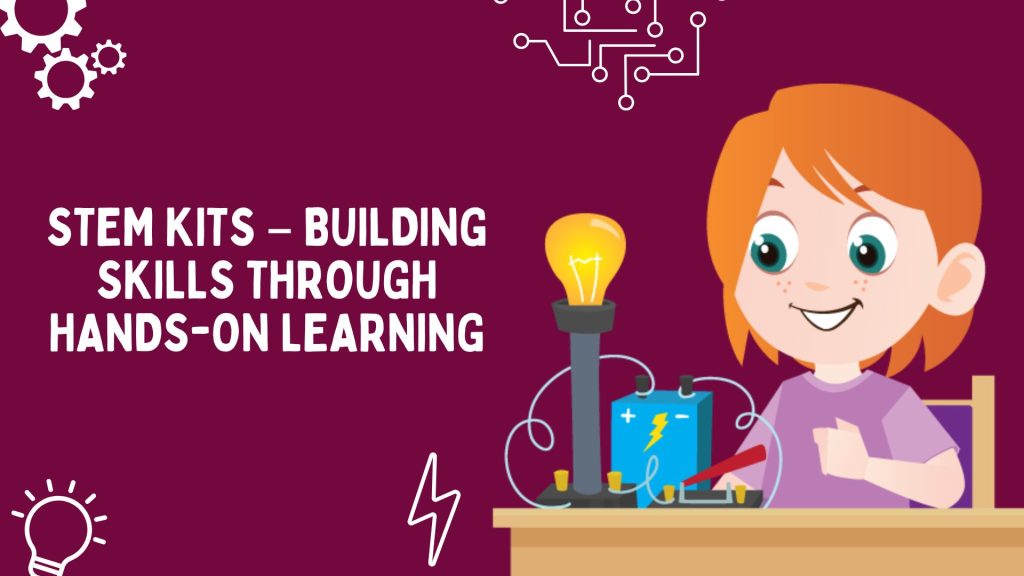The joy of a child building their first robot, the excitement of watching a solar-powered car move, or the focus while connecting circuits that suddenly light up—all of these moments highlight a truth: children learn best when they build, experiment, and explore, not just memorize.
In recent years, STEM kits have become powerful tools in transforming education. At a time when many classrooms still rely on outdated methods, these kits bring science, technology, engineering, and math concepts to life in ways that feel real and exciting.
Why STEM Kits Matter in Education
Today’s children are digital natives—they navigate mobile apps, games, and technology with ease. Yet, many of them struggle to stay engaged in traditional classrooms. The reason is clear: the way schools teach doesn’t always match the way kids naturally learn.
STEM kits for kids solve this challenge by engaging different learning styles at the same time:
- Visual learners see concepts in action.
- Kinesthetic learners build and manipulate real components.
- Auditory learners discuss discoveries with peers or mentors.
- Analytical thinkers solve step-by-step challenges.
This multi-sensory approach not only makes learning engaging but also ensures long-term understanding.
The Science Behind Hands-On Learning
Research in neuroscience shows that hands-on activities strengthen memory and problem-solving skills. When children build, test, and troubleshoot, their brains activate multiple regions—motor skills, logic, and spatial reasoning—together.

This form of “learning by doing” also teaches resilience. If a circuit doesn’t work the first time, children learn to debug, test, and try again. These problem-solving habits go beyond STEM—they prepare kids for real-life challenges.
Types of STEM Kits
1. Robotics and Engineering Kits
Robotics kits introduce children to mechanical design, electronics, and programming all at once. From servo motors and sensors to microcontrollers, these kits allow students to build robots that can walk, respond to commands, or even learn simple patterns.
Advanced robotics kits now include AI-based features, giving children early exposure to concepts like machine learning—skills that will shape the future job market.
2. Renewable Energy Kits
Projects like solar car kits let children explore sustainable energy while having fun. They learn how solar cells work, experiment with series vs. parallel connections, and observe how design changes impact performance.
Other kits cover wind power, water purification, and environmental monitoring, helping kids connect science to real-world challenges like climate change.
3. Electronics and Circuit Kits
Modern electronics kits go far beyond lighting LEDs. They include sensors, programmable boards, and even wireless components. Kids progress from building basic circuits to creating programmable systems, gaining logical thinking and debugging skills along the way.
4. Chemistry and Material Science Kits
Safe and engaging chemistry kits now allow children to explore crystal growth, polymer creation, and even biochemistry experiments. Many kits include real lab tools like pH meters or precision scales, making the experience authentic and skill-building.
STEM Kits in Schools and Programs
The impact of STEM kits grows when combined with structured programs:
- STEM Kits for Schools in India are being integrated into classrooms, replacing rote learning with practical experiments.
- Online and offline STEM academies are designing maker spaces and labs where students can collaborate, experiment, and showcase projects.
- Specialized programs ensure that every child learns at their own pace, with kits tailored to different interests and age groups.
Using STEM Kits at Home
Parents can create effective home learning spaces without major investment:
- A simple table can serve as a lab area.
- Organized storage prevents losing small parts.
- Good lighting makes detailed work easier.
- Most importantly, parental involvement—asking questions, celebrating effort, and encouraging curiosity—multiplies the learning impact.
Beyond Fun: Long-Term Benefits of STEM Kits
Working with STEM kits builds skills that extend far beyond school:
- Problem-solving & critical thinking
- Resilience through trial and error
- Collaboration & communication when working in teams
- Confidence with technology for future careers
Children who grow comfortable with hands-on STEM learning today will be better prepared for careers in AI, robotics, renewable energy, biotechnology, and more tomorrow.
Conclusion
STEM kits are more than just educational toys—they are pathways to real-world skills and innovation. By allowing children to build, test, and explore, they make abstract concepts concrete and exciting.
Whether used at home or as part of structured school programs, STEM kits in India are preparing a new generation of problem-solvers and innovators. They don’t just adapt to the future—they’re equipped to create it.

Hi, this is a comment.
To get started with moderating, editing, and deleting comments, please visit the Comments screen in the dashboard.
Commenter avatars come from Gravatar.